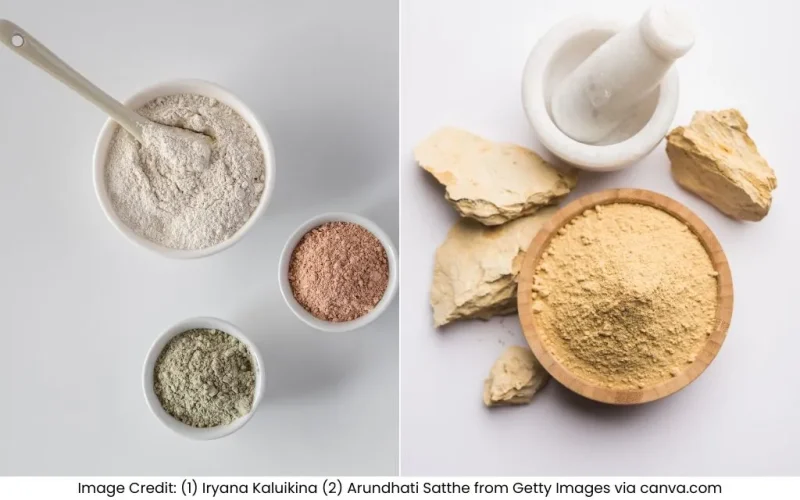Answer
Verified
Bentonite clay is a type of clay formed from volcanic ash, known for its ability to absorb toxins and impurities, often used for detoxification. Multani mitti, or Fuller’s Earth, is a natural clay rich in minerals and commonly used in skincare. While both are used for cleansing, Bentonite is more effective for deep cleansing, while Multani mitti is better for skin brightening. This is the key difference between bentonite clay and multani mitti.
Complete Answer:
Here is the difference between bentonite clay and multani mitti:
| Bentonite Clay | Multani Mitti |
| Bentonite is a type of volcanic ash clay, rich in minerals like sodium, calcium, and magnesium. It has strong detoxifying properties. | Multani Mitti is a natural clay composed of hydrated aluminium silicates, known for its absorbent and cleansing properties. |
| It is formed from the weathering of volcanic ash, found in areas like the U.S. and Europe. | It is found mainly in India and Pakistan, Multani Mitti is a soft, pale clay. |
| This clay is highly absorbent, has a high swelling capacity, and is negatively charged, attracting toxins and impurities. | Multani mitti is rich in minerals, absorbent, and mildly alkaline, helping to absorb excess oil and cleanse the skin. |
| It is a fine, powdery texture that forms a thick paste when mixed with water. | It has a slightly coarse texture that also forms a paste when mixed with water. |
| Bentonite clay is composed of montmorillonite, a clay mineral, rich in trace elements. | Multani mitti is composed of minerals like magnesium, silica, iron, calcium, and aluminium. |
| It becomes thick and pasty when mixed with water. | It tends to be smoother and softer when mixed with water. |
| Bentonite clay’s colour is typically grey, green, or brown depending on the mineral content. | The colour is pale yellowish-brown or off-white. |
| Primarily used for detoxifying, deep cleansing, and oil absorption, effective in treating acne and skin infections. | Used for brightening skin, reducing tan, treating acne, and soothing oily skin. |
Common Doubts:
 45,000+ students trusted us with their dreams. Take the first step today!
45,000+ students trusted us with their dreams. Take the first step today!


 One app for all your study abroad needs
One app for all your study abroad needs










